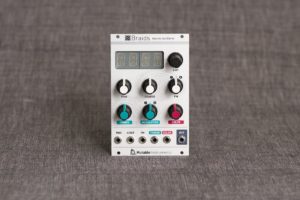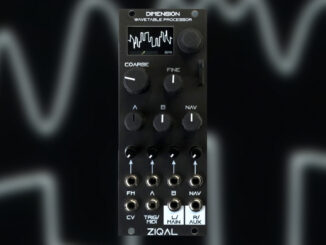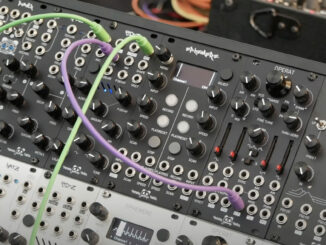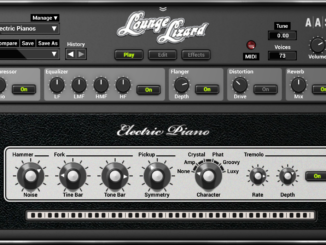Olivier Gillet, main developer of Mutable Instruments posted today a long very interesting news on Facebook. He explained the future of the Braids oscillator modules, why it’s outdated and how he will change it. Also he announced in the end that something new is coming very soon. I interpret this as a teaser and thus we will soon see a successor of the Braids oscillator module.

The Official Statement From Mutable Instruments
Guys and gals and everything in between… Remember this post where I talked about discontinuing Braids? Well, something has been in the works since March 2016! So let’s go through my list of gripes about Braids and see how I have decided to fix them.Braids is too big
Let’s make something around 12-HP. With big knobs for tuning-related things. Smaller than that and we’ll be stuck in the unplayable valley. Braids’ interface is inadequate for something that is supposed to be fun and immediate
Eliminate the display and menu system, reclaim the space. Voltage controlled model-surfing is fun: give it a dedicated CV input. Not a special “mode” that takes over the FM input. Braids is often used as a stand-alone voice: keep the internal VCA, make it a virtual LPG to give it a more natural feel on harmonically rich sounds, give it a dedicated CV input.
Braids is a good stand-alone percussive source: make the internal modulations easy to adjust. The internal envelope is routed to unpatched CV inputs, its amount is thus controllable with the attenuverters. Quantizing, downsampling, bit reduction: leave that to external modules.

There are too many tiny islands of sounds in Braids’ long list of models Instead of 2 parameters for sound control, make it 3. Connect the dots between all models employing similar synthesis techniques, until we get closer to one model = one synthesis technique. Add a second output for more opportunities of layering, cross-modulating, post-processing. Embrace the constraint of a finite number of models, and eliminate the outliers.
Braids’ DSP code is outdated compared to more recent modules Rewrite. 32-bit floats everywhere! Carefully use band-limited synthesis techniques whenever possible, and take the best from Warps, Elements, Rings. Braids is just too much in terms of price and size and mA. Use a modern but lean processor with excellent ADCs, a FPU unit, more RAM and flash memory, able to drive a good audio DAC (with DC-coupled outputs). And an efficient power supply.
Optimize the manufacturing and testing. Take the risk of manufacturing in larger batches. Aim for the same price as Tides/Warps. Braids isn’t fun enough. Now that a whole ecosystem of Mutable Instruments modules is available, look for complementarities and synergies. Make oscillators sound richer for Ripples to cut into, noise sources that work well as exciters for Rings, physical models that can double Rings’ or Elements’ tones, and good (CV-controlled!) percussive models that won’t make you regret Peaks.
Focus on knobs and CVs. The result? Coming very soon!
More information here: Mutable Instruments




Be the first to comment